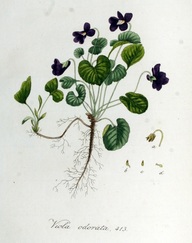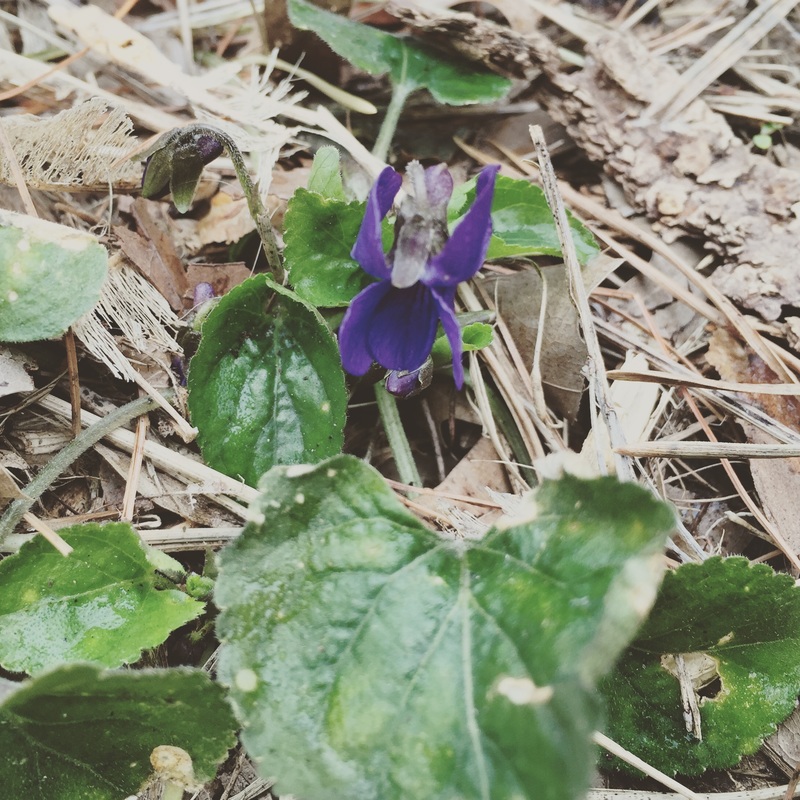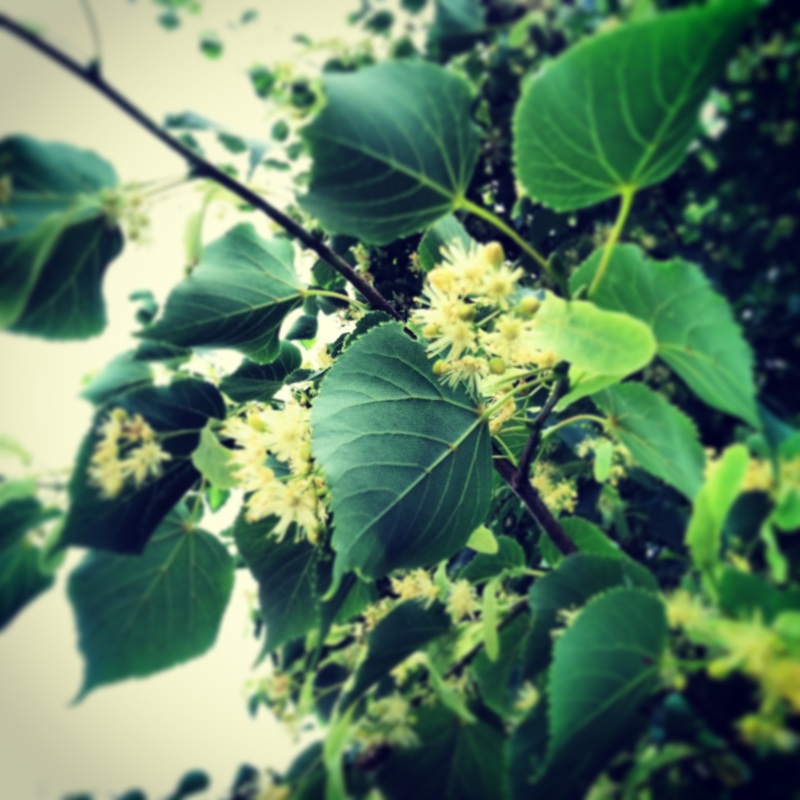|
You probably already know this if you have attended one of my herbal classes, but I love weeds! Yes, I have a great fondness for the plants that everyone tries to get rid of and “keep under control” especially the tenacious ones that keep on growing where nothing else could…. the crack of a sidewalk, compacted and poor soil, the top of a bridge, along railroad tracks, etc.… I love weeds because they are spunky and resourceful, and in some cases they are beneficial to the local ecosystem. These plants will hold down eroding soil, remove heavy metals, and/or provide greater soil fertility and organic matter. They grow in niches where more delicate plants cannot. Additionally, many of these so-called weeds make for good foods and remedies for humans. So, before you decide to remove a weedy creature from your garden or lawn, please consider all of the above qualities and appreciate the vitality that is found in wild plants! Now, onto Chickweed, one of our delightfully weedy plants that can be seen around town. First and foremost, chickweed is an abundant wild edible. It makes for a refreshing salad green and is a traditional spring tonic. It is very nutritious, being high in chlorophyll, vitamins A & C, and minerals such as calcium, magnesium, phosphorus, and potassium. Chickweed is a wonderful herb to help support the liver and the whole lymphatic system. Traditionally it is used to remove metabolic wastes and excess fats from the body.  If you make a tea of chickweed you might notice an interesting property that it has: when you pour hot water over the dried leaves you’ll see a foamy substance that rises to the top. This is because chickweed contains saponins, which are soap-like substances that increase the permeability of cells. This quality helps our human bodies to absorb more nutrients while also helping us to break down waste products, including excess mucous, toxins and fat cells. This makes it a perfect spring herb to turn to when our bodies need to wake up — and lighten up — after a long winter. On the herbal spectrum of actions chickweed is considered to be a cooling and demulcent herb. It is soothing and moisturizing for the body’s tissues, both internally and externally. Chickweed can be used for any sort of hot, inflammatory condition such as colitis, sore throat, itchy or inflamed skin, or even stings, burns and sunburn. I think it is especially wonderful for irritated and red eyes. A simple poultice of fresh chickweed placed over the eyes will bring cooling relief. Now in early spring is the time to scope out wild chickweed; before too long it will start to fade in the hot summer sun. Watch out for its dainty white, star-shaped flowers, and brilliant green leaves. It may be an over-looked plant but once you learn how to identify chickweed you will be surprised to see it growing abundantly, spreading like tiny stars across the city. HOW TO USE CHICKWEED:
I already spied my first violet of the season. Growing in a protected, warm spot there she was, already flourishing. This early-bloomer was so beautiful and unexpected I was stopped in my tracks. Soon we will have an abundance of these indigo gems sprouting up... Hopefully you will take the time to pluck a few to adorn your spring salads. I will have more to say about violet next month, just you wait... Now in mid-March, we may feel our restless hearts yearning for spring and all of its blossoms. We notice that things are changing very quickly and every day something new is emerging from the ground. So I send out this reminder: pay attention to the trees and weeds and bulbs that are sprouting at this very moment. You can learn so much from their growth and unfolding. Perhaps this is a new idea for you -- Did you know that you can learn from plants directly, without a mediator (i.e. a teacher/herbalist) in the middle? You can! And it is likely much more simple than you ever expected. In honor of Spring's arrival, here are a few of my favorite ways to get to know plants one-on-one:
I encourage you to try out these simple methods. In my practice I believe it is so important to taste, smell, observe and interact with herbs in order to more fully connect with them. You can gain so much from these simple exercises. If you would like more guidance in connecting with plants and learning how to use herbs in your daily life, perhaps you'd liketo join me in one of my upcoming Herbs for Everyday Living series... Warmest Spring wishes to you!  Today the wild violets in my backyard are blooming for the first time this season. They have been gently growing these past few weeks, unfurling their leaves, but today - like magic - they revealed their purple faces to the world. I could not think of a better plant to symbolize spring’s feeling of renewal than the sweet violet flower. With its tender, young, heart-shaped leaves, and its brilliantly colored flowers, it is truly a balm to a winter-weary spirit. As the violets bravely emerge in the still chilly temperatures, I think of them as sweet love letters unfolding from the earth. One of our best and most nutritious wild spring edibles, violet leaves and flowers are high in Vitamins A & C. You can eat them raw, plucked right from the garden; I like to add them to fresh salads for a beautiful spring touch. Violet has a slight mucilaginous quality to it, which means it contains a type of polysaccharide that imparts a viscous quality to water when extracted – a quality that is extremely soothing and cooling to mucous membranes. As such, violets can help calm inflammatory conditions, whether it is itchy skin, inflammation in the gut, or a scratchy, sore throat. Use violets on any irritated tissue – they will provide a cooling and soothing relief. Or, as the famous English herbalist Culpepper said, “All the Violets are cold and moist, and are used to cool any heat or distemperature of the body, either inwardly or outwardly.” Violet is also known as a traditional “blood purifier” or alterative herb. This makes it a wonderful and gently detoxifying plant for the spring season, helping our bodies to wake up from the winter and move along any stagnation. Just as the sap in the trees starts to move, so must we move the inner fluids of our bodies, especially through the filter of our lymphatic system. Violet is one of our best lymphatic herbs and is often used to support the removal of toxins from the system. Herbalist Matthew Wood especially recommends violet for “lymphatic stagnation and swollen glands, often in the throat or around the ears.”
If you read old herbal texts from a few centuries ago you will discover that violet was also prescribed as a support for emotional upset – it was said to “comfort and strengthen the heart” and to “to moderate anger.” Violet has an amazing ability to bring its soothing comfort to any inflammatory situation, whether physical or emotional. Botanically speaking, the violet plant is quite unique. Violets actually produce two different kinds of flowers – first the spring-born flowers (which attract both bees and humans alike). Usually, however, these flowers do not produce seed. Later in the season, violets produce a second kind of flower that grows close to the earth, or underground. Called cleistogamous flowers, these hidden blooms do not usually fully open, and are self-pollinated. Try pulling away the leaves of a clump of violet in late summer or early fall to find these unusual, pale flowers. If you happen to find a seed pod, take a peek inside – you will be most amazed to find a capsule full of luminous, iridescent seeds that shimmer in the sunlight. The first time I discovered the hidden secret of the humble violet, it took my breath away with its beauty. HOW TO FORAGE AND USE: Violets are abundant in early spring, and may even spontaneously grow in your backyard or garden. As with harvesting any wild plant, be sure that you are collecting plants in an area that is free from contamination. It is always a good idea to test your soil for heavy metals, and to stay away from collecting near busy roadsides. Once you have determined a suitable place to harvest your violets, you can pluck the young leaves and flowers when they first emerge and eat them raw in fresh salads. Violets are in their prime when the weather is still cool, so take advantage of the flowers while they are available. Once the weather turns warm, only the leaves will remain. You can also use dried violet leaf and flower when the fresh plant is not available, but the vivid purple-blue color of the flower will fade once dried. To make a violet infusion, steep up to 1 Tblsp. dried leaf in 8 oz. hot water for at least 10-15 minutes. If you would like to extract more of the soothing, mucilaginous qualities mentioned above, steep the dried leaf in cold water instead, which will preserve the beneficial polysaccharides. Violet blends well with other herbs such as rose, oat tops and linden for a relaxing tea. Note: The Violet we speak of here (Viola odorata and related species) is NOT the same as the indoor houseplant, the African Violet, which is unrelated and poisonous. Be sure to only use plants you have positively identified. A Spring Recipe: VIOLET SYRUP adapted from herbalist Susan Weed Ingredients: 1/2 pound fresh violet flowers 2 cups water 2 cups raw honey Directions: Collect your violet blossoms. Boil the water and pour over the fresh blossoms; cover. Let steep overnight in nonmetallic container. The next day, strain out the flowers and reserve the bright purple liquid. Combine the violet infusion and honey in a saucepan. Simmer gently, stirring, for ten or fifteen minutes, until it seems like syrup. Fill clean jars. Cool. Keep well chilled to preserve. This article was originally published on Cambridge Natural's blog.  Around these parts we are finally seeing some new signs of life. It is always worth the wait.... Usually spring seems to happen all at once and pass by much too quickly, but this year the new season's arrival has been more of a slow transition. I like that. I like catching a glimpse of where the first chickweed is popping up or where the crocus bulbs are blooming. I await the first green buds of the willow tree and keep close watch on the willows that line my morning walk. In spring the sap is starting to move, and so must we. Now's the time to gently shake off our winter selves and move into more active times. Time to support the cleansing action of the liver, time to eat bitter greens and gather young wild leaves. Watch for the dandelion, violet and chickweed leaves that are about to emerge: they make good food and medicine, imparting minerals and other nutrients while also energizing our bodies with the spring energies. In the meantime, before my beloved plants peek their heads out of the snow, I am making spring teas out of dried herbs. I mix dandelion leaf, violet, nettles and red clover. I'll add in a bit of linden or elderflowers for fun, and for beauty. Dandelion leaf makes me feel pure and sparkly (!); violet makes me feel calm and mysterious; nettles and red clover make me feel nourished.... sparkly + calm + pure + mysterious + nourished = ready for springtime |
Categories
All
Archives
January 2022
|







